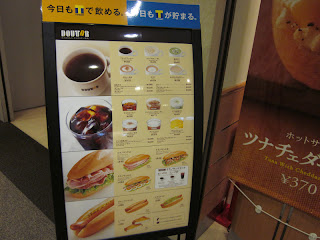I am primarily investing for income and in my last blog post, in what has become a yearly practice, I revealed my full year income from S-REITs as well as how they fit into my investment strategy. They are relevant to income investors but with the spectre of rising interest rates in the years ahead as well as a peaking in the real estate cycle here, it is sensible not to be overly optimistic about S-REITs in general.
So, apart from a large purchase made in Saizen REIT in the middle of 2012, I have devoted most of my resources to stocks. These should be undervalued and are likely to continue growing for years to come. Since I want to have income from my investments, I would also like for these stocks to pay dividends.
 |
| Marco Polo Marine's yard in Batam. |
Now, with these stocks, the main strategy is to buy and hold. However, I am not averse to trading around my investments. So, I could divest partially or fully if it is a good idea to do so. For 9M 2013, I revealed that I locked in gains of S$188,625.13. Has the number changed?
Well, I mentioned that I partially divested my investment in Sabana REIT last month. This added S$12,860.03 to gains from trading in 2013.
So, total trading gains in 2013 is S$201,485.16.
What about adding to my long positions?
What I hope to do primarily is to identify good companies, initiate long positions in them at fairly good prices and then wait to add to these positions if there should be bad news which send their share prices down. These are companies which I am comfortable to stay invested in for years, knowing that they possess some competitive advantages which differentiate them.
Warren Buffett famously said that we should invest with the thought that the stock market could close the next day and not reopen for five years. What does this mean?
Invest in stocks of companies which we are confident will do better over the next five years. We wouldn't be bothered by any volatility in their stock prices in the meantime unless it is to add to our long positions with greater margins of safety. If we understand this, we will know what stocks to avoid. How? Do an inversion.

With this in mind, in the last three months, I added to my long positions in NeraTel and Yongnam as their share prices declined due to bad news which I believe are neither long term nor recurring in nature. I have received fairly good dividends from these stocks and I also made some money trading these stocks earlier in the year.
I also added to my long position in SPH. I was paid both the special dividend and the year end dividend for this as well.
Marco Polo Marine is still my single largest investment although its share price has not declined significantly enough for me to add to my long position. The much higher dividend per share paid out recently was a bonus.
I also retain long positions in CapitaMalls Asia and Wilmar International. These are strong companies and leaders in their fields. They are likely to do better in future.
So, was anything new added to my portfolio?
I initiated a long position in Croesus Retail Trust and even added to this position by using funds freed from a partial divestment of Sabana REIT.
Wait a minute? Didn't I say that I am wary of rising interest rates and a possible peaking of the real estate cycle? Yes, I did but Croesus Retail Trust owns malls in Japan and the BOJ is bent on keeping interest rates really low. Abenomics demand this. The Trust has a relatively low cost of debt which is locked in for 5 years.
 |
| Luz Shinsaibashi. |
Japan has also suffered from continual deflation for 20 years. If anything, the real estate cycle should have a greater chance of bottoming than peaking. Anecdotal evidence tells of a recovering real estate market in recent months that is likely to pick up speed in future.
Although my strategy, with a generous dose of luck, has worked well this year, I can only hope that it will continue to work in the new year.
To grow wealth and augment income? Yes, indeed, that is the plan.
Related posts:
1. 2013 full year income from S-REITs.
2. Yongnam: Substantial shareholder increased stake.
3. NeraTel: Added to my long position.
4. Marco Polo Marine: Exciting times ahead.






























































